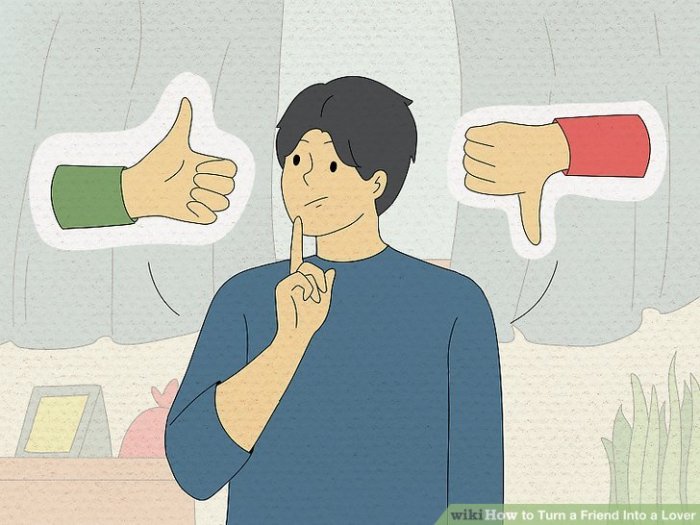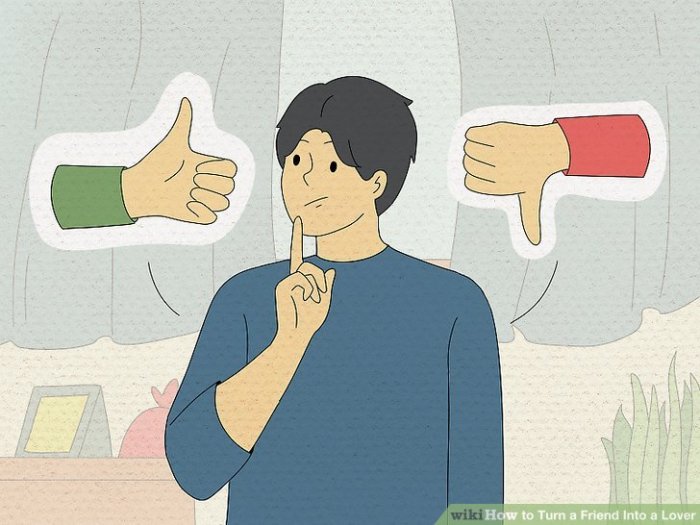Aries and Gemini Friendship, a captivating dynamic of two fire and air signs, often sparks intrigue. Aries, the passionate and headstrong leader, meets Gemini, the adaptable and intellectually curious friend. Their contrasting natures can lead to both exhilarating adventures and surprising misunderstandings. This exploration dives into the nuances of their potential for a strong and fulfilling friendship, examining their communication styles, shared interests, conflict resolution, and emotional support systems.
Discover how these two unique personalities can complement each other and navigate potential challenges.
Understanding the intricacies of their personalities and communication styles is key to fostering a harmonious bond. This post delves into the compatibility, potential conflicts, and effective strategies for maintaining a thriving Aries-Gemini friendship. From shared interests to resolving disagreements, we’ll uncover the secrets to making this connection flourish.
Aries and Gemini Compatibility Overview

Aries and Gemini, two fire and air signs respectively, often find themselves drawn to each other’s unique energy. Their contrasting yet complementary natures can lead to vibrant friendships, filled with intellectual stimulation and playful energy. However, understanding their potential differences is key to navigating any potential conflicts. This exploration delves into the dynamics of this friendship, highlighting common ground, potential challenges, and how these two signs can enrich each other’s lives.Aries, the fire sign, is known for their passionate, energetic, and assertive nature.
Geminis, the air sign, are characterized by their intellectual curiosity, adaptability, and communicative prowess. While these differences can create a dynamic interplay, they can also lead to friction if not managed carefully. A strong understanding of their respective traits and communication styles is essential for a healthy and fulfilling friendship.
Aries Personality Traits
Aries individuals are often described as enthusiastic, courageous, and independent. They thrive on challenges and are driven by a strong sense of self. Their energy is contagious and motivating, but they can also be impulsive and prone to quick decisions. Aries are known for their direct communication style, which, while appreciated by some, can sometimes be perceived as blunt by others.
Gemini Personality Traits
Geminis are known for their intellectual curiosity and adaptability. They possess a wide range of interests and a desire to explore different perspectives. They excel at communication and often enjoy lively conversations. However, their adaptability can sometimes lead to indecisiveness, and their need for variety might result in difficulty maintaining focus on a single task.
Common Characteristics Contributing to Friendship
Both Aries and Gemini are inherently social and enjoy engaging in stimulating conversations. Their shared desire for intellectual stimulation and their enthusiasm for new experiences can foster a strong friendship dynamic. They are both quick-witted and engaging, creating a playful and dynamic interaction. The energetic approach of Aries often complements the intellectual curiosity of Gemini.
Potential Areas of Conflict
Despite their potential for a fulfilling friendship, Aries and Gemini might encounter disagreements over matters of impulsivity versus careful consideration. Aries’ direct approach can sometimes clash with Gemini’s need for adaptability and multiple perspectives. Their varying approaches to problem-solving might lead to misunderstandings if not communicated effectively.
Aries and Gemini friendships can be a whirlwind of energy, a constant back-and-forth of ideas. Sometimes, though, that dynamic can feel a little too familiar, like getting caught in an echo chamber – a bit like the introspective exploration of Frank Ocean’s “echo chamber” concept. echo chamber frank ocean delves into this theme, mirroring the way both signs might find themselves reinforcing similar perspectives, often missing crucial outside viewpoints.
Ultimately, though, this shared energy, while potentially limiting, can also lead to incredibly strong and lasting bonds between these two fire and air signs.
Complementary Aspects of the Friendship
Aries’ decisiveness and focus can help Gemini ground their ideas and translate them into action. Gemini’s ability to see multiple sides of an issue can challenge Aries’ initial perspectives, fostering a more nuanced understanding of situations. This dynamic interplay can lead to creative solutions and a richer understanding of the world.
Aries and Gemini friendships can be a whirlwind of energy and ideas! They’re both fire signs, but Gemini’s airiness often provides a calming counterpoint to Aries’ sometimes intense drive. This dynamic can be super interesting, but sometimes it needs a little harmony, like watching Mount Eerie and Julie Doiron play on NPR’s Tiny Desk watch mount eerie and julie doiron play nprs tiny desk.
Their unique blend of sounds creates something really special, just like the energy between these two signs! Ultimately, their friendship thrives on mutual understanding and a shared passion for exploration.
Aries-Gemini Friendship Strengths and Weaknesses
| Aspect | Strengths | Weaknesses |
|---|---|---|
| Shared Interests | Both enjoy social gatherings and stimulating conversations. Their common ground in intellectual pursuits and new experiences often fosters strong connections. | Disagreements can arise if one party feels their approach is undervalued or disregarded. |
| Communication Style | Their contrasting communication styles, while potentially leading to conflict, can also spark engaging discussions. Aries’ directness complements Gemini’s ability to communicate diverse perspectives. | Aries’ directness can sometimes be perceived as insensitive by Gemini, requiring a conscious effort to moderate communication. |
| Problem Solving | Aries’ decisive nature combined with Gemini’s multifaceted perspective can result in innovative solutions to challenges. | Potential for miscommunication and disagreements over approaches to problem-solving due to their contrasting styles. |
Communication Styles in the Friendship
Aries and Gemini, despite their compatibility, can face communication challenges due to their contrasting communication styles. Aries, driven and direct, often communicate their thoughts immediately, while Gemini, adaptable and versatile, may prefer a more indirect approach. Understanding these differences is crucial for navigating potential misunderstandings and fostering a strong, healthy bond. This section delves into the nuances of their communication styles, highlighting potential pitfalls and offering practical strategies for effective dialogue.
Comparing Communication Styles
Aries are known for their direct and assertive communication style. They value clarity and efficiency, often preferring to get straight to the point. Geminis, on the other hand, are known for their adaptability and their ability to weave their ideas through a conversational thread. Their communication often involves several points of view, exploring ideas in multiple directions. This versatility can sometimes make their communication appear indirect to someone expecting a more straightforward approach.
Potential Misunderstandings
Aries, accustomed to direct communication, might perceive Gemini’s indirect approach as evasiveness or a lack of commitment. Conversely, Geminis might find Aries’ directness to be abrupt or insensitive, potentially leading to feelings of discomfort or even offense. These differing communication styles can create misunderstandings if not acknowledged and addressed. For instance, an Aries might feel unheard if a Gemini’s response is not immediately direct.
Effective Communication Strategies
Effective communication between Aries and Gemini requires a conscious effort to understand and appreciate each other’s communication styles. Active listening is key for both. Aries needs to practice patience and allow Geminis time to elaborate their points. Geminis, in turn, should be mindful to communicate their ideas clearly and concisely, ensuring their message is not misinterpreted as a lack of commitment.
Methods of Communication that Work Best
For Aries, clear, concise communication works best. Written communication, emails, or text messages can be effective for ensuring the message is conveyed without ambiguity. Geminis, given their versatile nature, benefit from face-to-face interactions and brainstorming sessions, where they can explore ideas and engage in lively discussions. A mix of both methods, where important points are followed up in writing, can provide a balance that satisfies both personalities.
Aries and Gemini friendships can be a whirlwind of energy, full of excitement and spontaneous adventures. They often find common ground in their love for new experiences, but sometimes that shared enthusiasm for trying new things, like the upcoming release of Clark’s new album, clark announces details of new album , can lead to clashes. Ultimately, their contrasting styles can create a dynamic and fascinating friendship, full of interesting interactions and growth.
Table of Effective Communication Strategies
| Communication Style | Aries | Gemini | Strategies for Effective Communication |
|---|---|---|---|
| Direct Communication | Strengths | Potential Challenges | Aries should acknowledge the need for Geminis to express themselves fully and not take directness as a lack of consideration. |
| Indirect Communication | Potential Challenges | Strengths | Geminis should strive for clarity, and offer direct answers where possible. |
| Active Listening | Important | Important | Both should make a conscious effort to fully understand the other’s perspective, and not just respond with a quick response. |
| Patience | Crucial | Crucial | Aries should allow Geminis time to articulate their thoughts and ideas, while Geminis should appreciate Aries’ desire for clarity and efficiency. |
Shared Interests and Activities
Aries and Gemini, despite their seemingly contrasting personalities, can forge a strong and fulfilling friendship if they understand and appreciate each other’s needs. A shared passion for experiences and activities is a crucial element in nurturing this bond. By identifying common interests and engaging in activities that cater to both personalities, they can create lasting memories and deepen their connection.Understanding the dynamic interplay between their energetic and inquisitive natures is key to fostering a vibrant friendship.
Aries, with their adventurous spirit and love for excitement, can be a great catalyst for Gemini’s thirst for novelty and exploration. Conversely, Gemini’s intellectual curiosity and adaptability can encourage Aries to broaden their horizons and engage in more cerebral pursuits.
Potential Shared Interests
Aries and Gemini share a fondness for experiences that offer intellectual stimulation and opportunities for adventure. Both signs thrive on new challenges and enjoy engaging in stimulating conversations. Their shared zest for life and willingness to embrace the unexpected create a fertile ground for a dynamic friendship.
Examples of Enjoyable Activities
Aries and Gemini can enjoy a wide range of activities together, including travel, exploring new places, attending concerts, or participating in exciting sports. Their shared love for novelty makes them natural partners in creating unforgettable experiences. They can also delve into intellectual pursuits like attending lectures, workshops, or joining book clubs.
Creating Shared Experiences
To foster shared experiences, it’s important to be flexible and adapt to each other’s interests. Aries thrives on action and spontaneity, while Gemini needs intellectual stimulation. Finding a balance between planned and spontaneous activities is crucial for a harmonious friendship. Start by brainstorming ideas together and letting each person contribute their unique perspective.
Catering to Different Interests
Identifying and catering to each other’s interests is key to fostering a fulfilling friendship. Aries enjoys activities that involve physical exertion and a sense of accomplishment. Gemini appreciates activities that provide opportunities for intellectual growth and creative expression. Finding a common ground involves understanding these nuances and adjusting activities accordingly. For example, if Aries suggests a hiking trip, Gemini might suggest a visit to a local museum afterward to discuss the historical context of the area.
Table of Suitable Activities
| Activity | Aries Appeal | Gemini Appeal |
|---|---|---|
| Hiking/Outdoor Adventures | Physical challenge, sense of accomplishment | Exploring new landscapes, discovering hidden gems |
| Attending Concerts/Live Performances | High energy, vibrant atmosphere | Discovering new artists, engaging in conversations |
| Cooking Competitions/Culinary Experiences | Testing skills, achieving a goal | Exploring new recipes, learning about different cultures |
| Visiting Museums/Historical Sites | Learning about history, understanding the past | Engaging with exhibits, discussing perspectives |
| Workshops/Masterclasses | Learning new skills, gaining knowledge | Intellectual stimulation, expanding knowledge base |
Conflict Resolution Strategies
Aries and Gemini friendships, while often vibrant and exciting, can experience occasional friction due to their contrasting personalities. Understanding these potential points of contention and developing constructive conflict resolution strategies is key to maintaining a strong and healthy bond. Gemini’s adaptability and quick wit can sometimes be perceived as evasiveness by the direct and action-oriented Aries, while Aries’ straightforwardness can feel blunt or insensitive to Gemini’s more nuanced approach.
By acknowledging these differences and employing effective communication techniques, these friends can navigate disagreements with grace and understanding.
Common Areas of Disagreement
Aries and Gemini, despite their shared zest for life, may find themselves at odds over differing approaches to communication and decision-making. Aries, with their assertive nature, may feel frustrated by Gemini’s tendency to shift perspectives and postpone commitments. Conversely, Gemini might perceive Aries’ directness as insensitive or inflexible, leading to misunderstandings. Differences in how they prioritize tasks, or how they express their feelings can also create conflict.
Varying levels of patience and the importance they place on details also play a role.
Strategies for Constructive Conflict Resolution
Effective communication is paramount in resolving any conflict. Open and honest dialogue, where both parties feel heard and understood, is essential. Emphasize active listening, ensuring each person feels validated and acknowledged. Avoid interrupting, and allow ample time for both partners to articulate their points of view.
Approaching Disagreements with Empathy and Understanding
Instead of focusing solely on the disagreement itself, attempt to understand the underlying motivations and emotions driving each party’s perspective. Ask clarifying questions to gain insight into the other’s viewpoint. Empathize with their feelings, even if you don’t necessarily agree with their perspective. Acknowledging their feelings, even if not condoning their actions, can go a long way in de-escalating the conflict.
The Role of Compromise in Strengthening the Friendship
Compromise is a vital element in any healthy relationship. Being willing to meet in the middle, to adjust expectations, and to find solutions that satisfy both parties strengthens the friendship and fosters mutual respect. Instead of seeking to “win” the argument, focus on finding a solution that works for everyone involved.
Conflict Resolution Techniques
| Technique | Description | Example |
|---|---|---|
| Active Listening | Paying close attention to the other person’s words and emotions, summarizing their points to ensure understanding. | “So, if I understand correctly, you feel frustrated because…” |
| Empathetic Communication | Expressing understanding and acknowledging the other person’s feelings, even if you don’t agree. | “I can see why you feel that way, given the circumstances.” |
| Seeking Clarification | Asking questions to understand the other person’s perspective more fully, avoiding assumptions. | “Can you elaborate on what you mean by…?” |
| Compromise | Finding a solution that addresses the concerns of both parties. | “Perhaps we could find a middle ground by…” |
| Time-Out | Taking a break from the discussion when emotions run high to cool down and return to the conversation with clarity. | “Let’s take a 15-minute break and come back to this.” |
Emotional Support and Understanding: Aries And Gemini Friendship
Aries and Gemini, while seemingly disparate, can forge a strong and supportive friendship. Understanding their unique emotional landscapes is key to navigating potential challenges and fostering a bond built on trust and empathy. Their contrasting approaches to expressing and receiving emotions can sometimes lead to misunderstandings, but with awareness and a willingness to listen, their differences can become a source of strength.
Aries Emotional Expression
Aries, known for their fiery energy, often express emotions intensely and directly. They may not always be adept at subtle cues, but their honesty and straightforwardness can be a refreshing change for those around them. An Aries will likely show support by offering active encouragement and practical help, rather than lengthy conversations. Their enthusiasm and passion can be contagious, offering a burst of energy when needed.
Gemini Emotional Expression
Geminis, with their adaptable nature, express emotions in a more multifaceted way. They may articulate their feelings through conversation, exploring different perspectives and offering insightful observations. They often seek understanding and connection through dialogue, valuing intellectual engagement and shared experiences. Their ability to see multiple sides of an issue can be a valuable tool for resolving emotional conflicts.
Understanding Emotional Needs, Aries and Gemini Friendship
Recognizing and appreciating each other’s emotional needs is paramount in this friendship. Aries thrives on feeling valued and appreciated for their direct approach, while Geminis need to feel heard and understood on a deeper level. This difference requires both partners to be mindful and flexible in their communication style. A willingness to compromise and adapt will strengthen the bond.
Empathy in Navigating Challenges
Empathy is crucial for Aries and Gemini to navigate emotional challenges together. Aries can learn to listen actively to Gemini’s nuanced emotional expressions, while Gemini can appreciate Aries’s passionate and direct support. By understanding the emotional language of each other, they can anticipate and respond to each other’s needs, building a foundation of trust and mutual respect. This understanding will help them resolve conflicts more effectively and create a safe space for open communication.
Table: Emotional Support Strategies
| Situation | Aries Support | Gemini Support |
|---|---|---|
| Aries is feeling frustrated about a project | “Let’s break this down. What’s the next actionable step?” (Offers a solution-oriented approach) | “Tell me more about what’s frustrating you. Maybe we can find a different angle.” (Offers a space for discussion and perspective) |
| Gemini is feeling overwhelmed by a social commitment | “I’ll help you prepare. Let’s make a plan together.” (Offers practical support) | “It’s okay to feel overwhelmed. How can we make this more manageable?” (Validates feelings and seeks solutions) |
| Aries is feeling insecure about a presentation | “You’ve got this! You’ve prepared well, and you’re brilliant.” (Direct and encouraging words) | “What are your thoughts on the presentation? Let’s brainstorm ways to address your concerns.” (Offers a discussion to build confidence) |
| Gemini is feeling down about a personal issue | “What do you need right now? Let’s figure it out together.” (Focuses on practical support) | “I’m here to listen. What’s going on?” (Offers a space for Gemini to express their feelings) |
Potential Challenges in the Friendship
Aries and Gemini, despite their shared enthusiasm and quick wit, can encounter hurdles in their friendship due to their contrasting personalities. Understanding these potential pitfalls allows the pair to navigate disagreements proactively and strengthen their bond. Their different approaches to life and communication can lead to misunderstandings, but these can be effectively addressed with open dialogue and a willingness to compromise.
Differing Communication Styles
Aries, often direct and outspoken, might come across as blunt to the more nuanced and expressive Gemini. Conversely, Gemini’s tendency to overthink and elaborate might frustrate Aries’ desire for concise communication. These differences in communication styles can lead to misinterpretations and arguments if not acknowledged and managed.
- Aries, with their straightforward nature, may perceive Gemini’s indirectness as evasiveness or a lack of commitment. Gemini, in turn, may find Aries’ bluntness insensitive or harsh.
- Misunderstandings can arise from differing communication speeds. Aries might feel Gemini is dragging out conversations, while Gemini might find Aries’ rapid-fire communication overwhelming.
Varying Approaches to Commitment
Aries often prioritize action and quick results, while Gemini thrives on intellectual stimulation and flexibility. This difference can sometimes lead to differing expectations in the context of a friendship.
- Aries might expect immediate follow-through on plans, while Gemini may need more time to formulate their ideas and finalize plans. This can lead to frustration for the Aries friend.
- A Gemini might feel that Aries is too rigid and not open to change in plans, while Aries might feel that Gemini is indecisive and unreliable.
Handling Conflicts
The fiery nature of Aries and the adaptable nature of Gemini can create passionate discussions. Effective conflict resolution requires understanding each other’s perspectives and acknowledging individual differences.
- When disagreements arise, both partners need to actively listen to each other’s viewpoints. Employing empathy and seeking common ground is essential.
- Aries needs to temper their impulsive reactions, while Gemini needs to articulate their needs more directly. This requires a conscious effort to adapt communication styles.
- Establishing clear boundaries and expectations within the friendship is crucial. This involves openly discussing acceptable behavior and reactions to disagreements.
The Importance of Open Communication
Open communication is the cornerstone of any successful friendship, particularly between Aries and Gemini. Honest dialogue allows both to understand each other’s needs, address concerns, and navigate challenges effectively.
- Active listening and empathy are crucial. Taking the time to truly understand the other person’s perspective, even when disagreeing, helps build trust and rapport.
- Regular check-ins and discussions about expectations foster clarity and prevent misunderstandings from escalating into larger conflicts.
- Acknowledging individual differences and finding ways to appreciate each other’s strengths are essential for long-term harmony.
Specific Strategies for Managing Challenges
Several strategies can aid in managing the potential challenges in an Aries-Gemini friendship. These strategies involve actively listening, compromising, and adjusting communication styles.
- Scheduling regular catch-up sessions to discuss any concerns or disagreements can prevent issues from festering.
- Practicing active listening, where each person attentively hears the other’s point of view, is a critical skill.
- Compromise is key. Aries can learn to be more flexible, while Gemini can be more direct in expressing their needs. This often requires patience and willingness to adjust.
Illustrative Examples

Aries and Geminis, with their contrasting yet complementary natures, can create a dynamic and fulfilling friendship. Understanding their unique communication styles, shared interests, and potential conflict resolution strategies is key to nurturing a positive relationship. Positive interactions, successful conflict resolution, and a deep understanding of each other’s needs are crucial for maintaining a thriving friendship.
Positive Interactions
Aries, with their fiery enthusiasm and Geminis, with their quick wit and adaptability, often find common ground in shared interests. Their dynamic interplay can spark exciting adventures and create unforgettable memories. For example, an Aries might suggest a spontaneous weekend camping trip, while a Gemini could readily brainstorm fun activities and ensure everyone is involved. Their diverse perspectives lead to a richer and more exciting experience for both.
Successful Conflict Resolution Strategies
Conflicts are inevitable in any relationship, but a strong foundation of understanding can help navigate disagreements. Aries and Gemini, with their distinct approaches to communication, can effectively resolve conflicts through open and honest dialogue. If an Aries feels their ideas aren’t being heard, a Gemini can actively listen and try to understand their perspective. Similarly, an Aries can learn to temper their impulsive reactions, while a Gemini can express their needs more directly.
This ability to compromise and understand each other strengthens the bond.
Understanding Each Other’s Needs
An Aries thrives on feeling appreciated and recognized for their energy and passion. A Gemini needs to feel heard and understood in their varied thoughts and ideas. Recognizing these needs is crucial for a healthy friendship. A Gemini might appreciate an Aries’s unwavering support for their ideas, and an Aries can benefit from a Gemini’s ability to connect with others in diverse social settings.
By understanding each other’s motivations, both partners can provide the support and understanding that fosters a deep and meaningful friendship.
Overcoming a Challenge
One example of an Aries-Gemini friendship overcoming a challenge involved a significant project deadline. The Aries, a highly motivated and energetic project leader, was facing time constraints. The Gemini, a resourceful planner, noticed the stress and immediately suggested innovative time-management strategies. They collaborated, dividing tasks strategically. The Gemini’s adaptability in adjusting the project plan to accommodate the Aries’s intense work style was crucial.
The project was completed successfully, showcasing the strengths of their complementary approaches and demonstrating the effectiveness of their teamwork.
Positive Growth
Amelia, an Aries, and Leo, a Gemini, had a friendship marked by passionate discussions and impulsive outings. Initially, their differences in communication styles led to misunderstandings. Amelia, impatient with Leo’s need for constant mental stimulation, would sometimes interrupt. Leo, accustomed to exploring various perspectives, felt that Amelia’s directness was sometimes overwhelming. However, over time, they learned to communicate more effectively.
Amelia started listening more attentively to Leo’s ideas, and Leo began expressing his needs more clearly. Their friendship evolved, becoming a source of mutual support and inspiration. They planned themed parties that incorporated both their personalities: lively activities alongside intellectual discussions, showcasing their diverse tastes and creating lasting memories. Their ability to adapt and understand each other’s needs led to a deeper connection and a more fulfilling friendship.
Conclusion
In conclusion, the Aries and Gemini friendship, though potentially challenging, can be profoundly rewarding. Their contrasting personalities, while capable of sparking friction, offer unique opportunities for growth and understanding. By appreciating each other’s strengths, navigating potential conflicts with empathy, and nurturing shared interests, this dynamic duo can forge a strong and lasting bond. This exploration has highlighted the importance of open communication, compromise, and emotional support in sustaining a healthy friendship between these two distinct zodiac signs.










